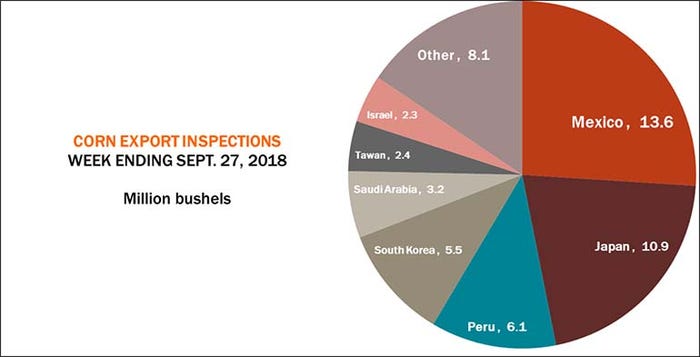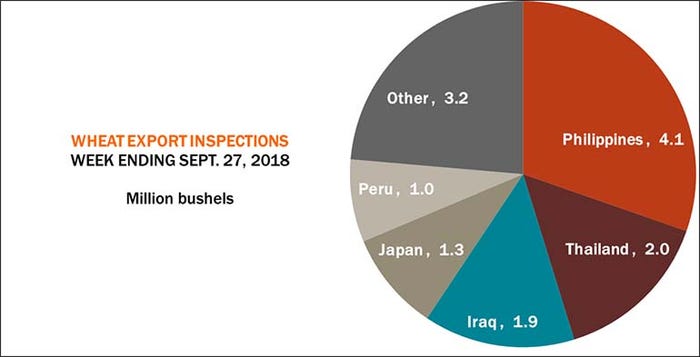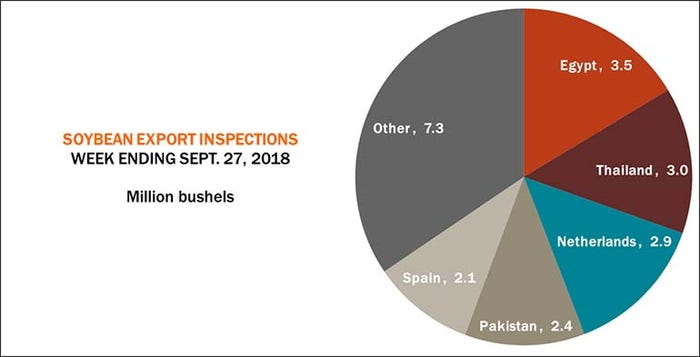Weekly Grain Movement – How did grain fare minus China?
One of the largest export markets was conspicuously quiet last week.

Grain exports managed decent numbers last week, according to the latest USDA export inspections report, out Monday morning. Results were mostly solid – even without a major export market present, according to Farm Futures senior grain market analyst Bryce Knorr.
“Nothing shipped out to China last week,” he says. “While total corn business was brisk, shipments of wheat and soybeans remain slow. Soybean business likely will be spread out through the marketing year, but wheat buyers still aren’t showing signs they’re nervous about world stocks.”

Corn export inspections for the week ending September 27 reached 52.9 million bushels, which was slightly behind the prior week’s total of 52.9 million bushels. Totals exceeded the average trade guess of 39 million to 49 million bushels and came in well ahead of year-over-year results of 33.6 million bushels. The weekly rate needed to meet USDA forecasts eased to 44.5 million bushels, and cumulative year-to-date totals for 2018/19 reached 174 million bushels, trending more than 47% higher than 2017/18’s pace of 118 million bushels.
Mexico was the No. 1 destination for U.S. corn export inspections last week, with 13.6 million bushels. Other top destinations included Japan (10.9 million), Peru (6.1 million), South Korea (5.5 million), Saudi Arabia (3.2 million), Taiwan (2.4 million) and Israel (2.3 million).
Soybean export inspections last week reached 21.7 million bushels, down moderately from the prior week’s total of 26.4 million bushels and on the low end of trade expectations, which ranged between 16 million and 31 million bushels. The rate needed to match USDA forecasts moved higher, to 39.0 million bushels, while year-to-date totals for 2018/19 of 108 million bushels continue to sag 26% lower year-over-year.
Egypt was the No. 1 destination for U.S. soybean export inspections last week, with 3.5 million bushels. Other top destinations included Thailand (3.0 million), the Netherlands (2.9 million), Pakistan (2.4 million) and Spain (2.1 million).
Wheat export inspections last week reached 13.6 million bushels, also down slightly from the prior week’s total of 15.7 million and on the low end of trade expectations that ranged between 12 million and 18 million bushels. The weekly rate needed to pace USDA forecasts moved higher, to 20.8 million bushels, while 2018/19 year-to-date totals of 254 million bushels are down around 30% from the prior marketing year.
The Philippines came in as the No. 1 destination for U.S. wheat export inspections last week, with 4.1 million bushels. Other leading destinations included Thailand (2.0 million), Iraq (1.9 million), Japan (1.3 million) and Peru (1.0 million).






About the Author(s)
You May Also Like





